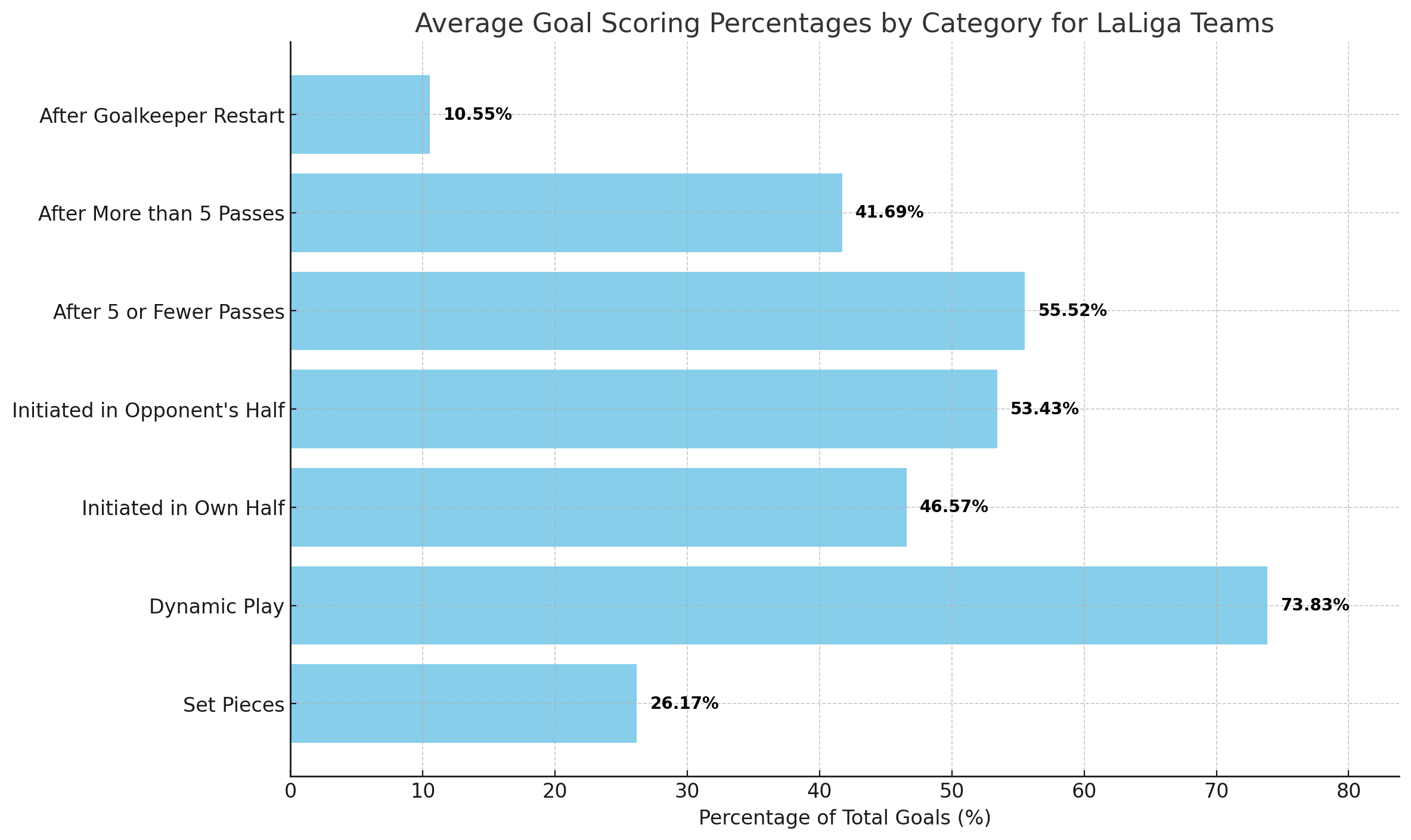
27 Jun Analysis of Goals in LALIGA EA Sports: How Champions League Teams Scored and Conceded Goals

Abstract
In the recent LALIGA EA SPORTS 2023/24 season, the teams that secured Champions League spots demonstrated statistically significant differences in several metrics compared to other teams. This study analyzes how these teams scored and conceded goals, highlighting key performance aspects that contributed to their success.
Introduction
The LALIGA EA SPORTS 2023/24 season has provided a wealth of data on team performance, particularly focusing on how goals are scored and conceded. This study aims to compare the performance of teams that secured Champions League spots with those that did not, using detailed goal metrics.
Methods
Data for this study was sourced from the official LaLiga database, focusing on the metrics of goals scored (CONSEGUIDO EQUIPO) and goals conceded (CONSEGUIDO RIVALES). The analysis included metrics such as goals from set pieces versus dynamic play, possession initiation (own half versus opponent’s half), and the number of passes leading to a goal.
Results
How They Scored Goals:
- Dynamic Play vs. Set Pieces:
- Goals from dynamic play: Teams in Champions League positions scored 20% more goals in dynamic play situations compared to other teams. This suggests a higher proficiency in creating and finishing in open play.
- Goals from set pieces: There was no significant difference, indicating that these teams’ main advantage lies in dynamic play.
- Possession Initiation: Own Half vs. Opponent’s Half:
- Goals with possession initiated in own half: These teams scored 17% more goals starting from their own half, showcasing their ability to build plays from deep.
- Goals with possession initiated in opponent’s half: They scored 19% more goals when possession started in the opponent’s half, reflecting their effectiveness in exploiting high-pressure situations and opponent errors.
How They Conceded Goals:
- Dynamic Play vs. Set Pieces:
- Goals conceded from set pieces: Champions League teams conceded 12% fewer goals from set pieces, indicating a robust and organized defense in these scenarios.
- Goals conceded from dynamic play: There was no significant difference, suggesting comparable performance to other teams in open play defense.
- Possession Initiation by Opponents: Own Half vs. Opponent’s Half:
- Goals conceded with possession initiated in own half (opponents): No significant differences were found, indicating a consistent defensive performance regardless of where the opponent’s possession began.
- Goals conceded with possession initiated in opponent’s half (opponents): Opponents scored 15% fewer goals in set-piece situations initiated in the opponent’s half, highlighting the teams’ ability to defend effectively in high-pressure situations.
Discussion
The analysis reveals that teams in Champions League positions excel in dynamic play, both in scoring and defending. Their ability to build from the back and capitalize on high-pressure situations from the opponent is evident. Additionally, their superior organization in defending set pieces further distinguishes their performance from other teams.
Conclusion
Teams that secured Champions League spots in the LALIGA EA SPORTS 2023/24 season demonstrated a balance between offensive versatility and defensive solidity. Their success is attributed to their proficiency in dynamic play and their structured approach to set-piece defense.


